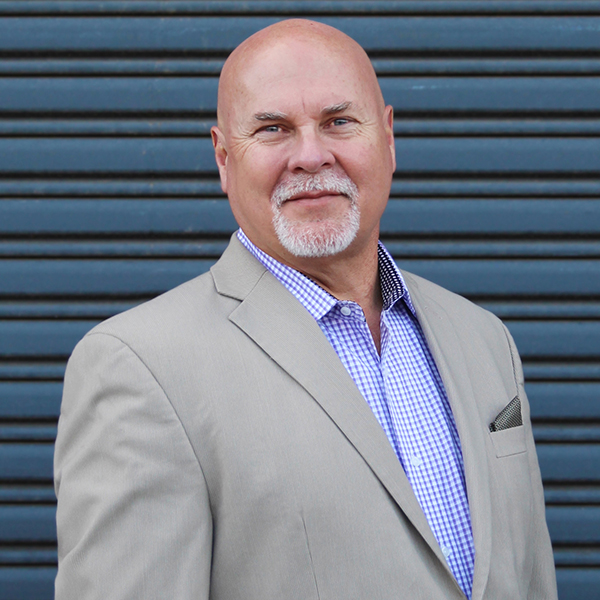The Satisfaction Formula – Smile
In this section of The Satisfaction Formula, authors Dave Sweet and Jayna Sweet introduce +1 and explore the benefit SMILING adds to the customer experience.
If you joined us here last week, you’ll recall we mentioned another piece to the puzzle: “+1.” If you’ve picked up our book then by now you know what that means. If not, never fear! We’ll catch you up to speed.
Our best experience typically becomes our next expectation. Say you show up to a restaurant expecting a 5 experience, but the folks there provide such excellent service that your perception of that experience is an 8. Know what that means? The next time you go to that restaurant, you’ll expect an 8 again – not a 5. And that makes things a little bit harder for the restaurant to exceed your expectations.
Ultimately, the only way to keep exceeding expectations is to keep doing things that go above and beyond.
Therefore, our premise is to look for things that deliver the customer’s expectation, plus something. How we truly view it is: +1. Each time a customer comes back in, you want them to perceive that their expectations were exceeded by at least a little – hence, the +1. Why only one? Because then you don’t have to keep jumping over these huge, high hurdles that could become nearly impossible to keep clearing. This is a more sustainable approach to helping you exceed expectations every day. +1 is a tangible goal to achieve with every interaction. You’re breeding a customer culture of, “Wow, that was a great experience, and they made it even better.” Every. Single. Time.
One of our favorite ways to ensure +1, expectations-exceeded service? Smiling. Truly.


Have you heard the term “Duchenne Smile?”
Pronounced like doo-shen, it refers to a genuine smile that not only engages the lip and mouth muscles, but the eye muscles as well. Guillaume-Benjamin-Amand Duchenne de Boulogne (known as Duchenne de Boulogne to peers) was a French neurologist in the 1800s. He was one of the forerunners of documenting his experiments with photographs. In his studies, he noticed radical differences in the way people smiled – and the feelings those different smiles evoked in observers. So, what kind of smile do you think Duchenne’s research concluded helps form the most positive first impression? You guessed it. That genuine smile which engages the eye muscles – or, as Tyra Banks would say, a “smize” (smile with the eyes).
On the flip side, a smile that seems or feels “forced” leaves a bad impression. One of the most notorious examples of this kind of smile has become known as “The Pan Am Smile.”
Legend has it that Pan Am flight attendants were taught (slash-coerced, slash-forced) to “smile no matter what” when interacting with a customer. Now also known as the “Botox Smile,” it is the name given to a fake smile, or a smile that only uses one’s mouth and not one’s eyes. It makes a bad, insincere impression. (Not that there is any correlation, but Pan Am did go bankrupt. Just sayin’.)
Smiling can have a tremendous effect on our mood, our health, and even our quality of life! Take it from Scientific American, who talked about this very thing in a 2010 podcast. “A 30-year long study published in the Journal of Personality and Social Psychology found that women who displayed the Duchenne smile in their college yearbook photos had greater levels of well-being and marital satisfaction three decades later.” They also cite another study from that year published in Psychological Science which “went further to make a connection between smiles and longevity. They found that professional baseball players who sported Duchenne smiles in their yearbook photo were only half as likely to die, in any given year, as those who had not.” Whoa! Doesn’t that sound great? And all just from genuinely smiling more.
Let’s look at one more positive way smiling can impact our health. Our bodies are constantly creating hormones. In theory, our bodies know when we need a certain hormone and when we don’t. However, outside factors can play into this, leading to our brains producing too much or too little of a certain hormone. For a moment, let’s talk about two specific hormones: cortisol and oxytocin. Have you heard of these? Chances are, you know that we’re “supposed” to keep our cortisol levels low. And maybe you know that oxytocin makes us feel warm and fuzzy. Cortisol is a steroid hormone that regulates a wide range of processes throughout the body, including metabolism and immune response.
Cortisol also has a very important role in helping the body to respond to stress. Some people refer to this as the “stress hormone.” While it’s an important tool our bodies use to respond to stress, too much stress can spike it to levels that get far too high, causing some frustrating symptoms (rapid weight gain, high blood pressure, and mood swings just to name a few). No thanks! Now, let’s talk about oxytocin. You may have heard it referred to as “the love hormone” or “the cuddle hormone.”
Oxytocin is a neurotransmitter and hormone that plays a role in empathy, trust, and relationship-building and has been known to treat several conditions including depression, anxiety, autistic spectrum disorders, and intestinal issues.
Okay, that’s all interesting, but what does it have to do with smiling? Darryl Davis, speaker and life coach, maps this out in a blog post about the chemicals and hormones that are released when we smile. Here’s how he puts it: “When someone likes your status on Facebook, your brain releases oxytocin. If you ever want to control a complete stranger’s mind, just smile at them! Smiling at somebody will release oxytocin in both your own and the other person’s brains.” Did you know that oxytocin also lowers cortisol, that “stress hormone” which can wreak havoc on your health, brain, and mood when it reaches too-high levels?

So, here’s a question: If smiling releases oxytocin in your own brain, why wouldn’t you want to smile all the time? And another: If it releases oxytocin in the brain of whomever was smiled at, wouldn’t you want to train everyone in customer service to smile at their customers?
Sources:
Adoree Durayappah-Harrison, “What Science Has to Say about Genuine vs. Fake Smiles,” January 5, 2010.
https://www.psychologytoday.com/us/blog/thriving101/201001/what-science-has-say-about-genuine-vs-fake-smiles
Scientific American, “What Makes an Honest Smile Honest?” December 11, 2010.
https://www.scientificamerican.com/podcast/episode/what-makes-an-honest-smile-honest-10-12-11/
You and Your Hormones, “Cortisol,” January 2017.
http://www.yourhormones.info/hormones/cortisol/
Markus MacGill, “What is the link between love and oxytocin?” September 4, 2017.
https://www.medicalnewstoday.com/articles/275795.php
Darryl Davis, “Why A Real Smile Begins in Your Brain: An Introduction.”
http://darrylspeaks.com/real-smile-begins-in-your-brain/
About the Authors
Learn More
Interested in learning more and purchasing the book? Check out The Satisfaction Formula’s website and come back next week to learn the importance of EDUCATING!

